25
Jun
 The Common Core State Standards (CCSS) is a controversial topic, widely-debated in nearly every circle in the field of Education. Perhaps nowhere is the concept of an outside, mandated set of standards met with more cynicism and philosophical aversion than in the Montessori community. This reaction is understandable, as the Montessori approach to education encompasses rich traditions based on scientific study regarding how children develop and learn. Montessori differs significantly from traditional approaches to education and Montessorians are justifiably protective of a curriculum that is elegant, complex, and research-based. In Montessori: The Science behind the Genius, Dr. Angeline Stoll Lillard states,
The Common Core State Standards (CCSS) is a controversial topic, widely-debated in nearly every circle in the field of Education. Perhaps nowhere is the concept of an outside, mandated set of standards met with more cynicism and philosophical aversion than in the Montessori community. This reaction is understandable, as the Montessori approach to education encompasses rich traditions based on scientific study regarding how children develop and learn. Montessori differs significantly from traditional approaches to education and Montessorians are justifiably protective of a curriculum that is elegant, complex, and research-based. In Montessori: The Science behind the Genius, Dr. Angeline Stoll Lillard states,
…no other single educational curriculum comes close to the Montessori curriculum in terms of its levels of depth, breadth, and interrelationship across time and topic.
At the root of the anxiety many Montessorians feel in regards to the Common Core, is a fear that an educational approach continuously confirmed by modern science, may be forcibly diluted to more closely resemble traditional failed methodologies. However, by applying a mindful, analytical approach to studying the correlation between Montessori and the Common Core, it becomes apparent that this apprehension may not be necessary. To the surprise of Montessorians everywhere, the Common Core may actually represent an unexpected opportunity for Montessori.
Let’s start with two general facts about the Common Core:
1. The Common Core State Standards define baseline expectations for each grade level in English Language Arts and Mathematics, for publicly-funded schools.
2. Forty-five states, the District of Columbia, four territories, and the Department of Defense Education Activity have adopted the Common Core State Standards. Alaska, Minnesota, Nebraska, Texas, and Virginia are the only states that have yet to adopt the Common Core. Click here to view the current map.
 Now that we have established in a very broad sense what CCSS “is” and who it presently “affects”, we can begin a meaningful analysis.
Now that we have established in a very broad sense what CCSS “is” and who it presently “affects”, we can begin a meaningful analysis.
The many factions involved in the education reform debate in the United States over the years have frequently become bogged down in heated disagreements over “What” and “When” to teach. For better or worse, the Common Core has defined a set of common learning goals for specific grade levels, effectively removing those topics from the table. Proponents of education reform can now move past “What” and “When” to teach and advance to “How” we should effectively teach students the multitude of skills they will need to be successful in the 21st century.
For serious education reformers, the “How” question necessitates a closer examination of existing educational pedagogies. In this shifting landscape, the Common Core has created an opportunity for Montessori to truly shine and influence the education reform decisions that will impact our children for decades to come. Therefore, regardless of individual affiliations and nuanced classroom methods, the “How” question should unite and galvanize Montessori advocates from every corner of the country and around the globe.
An intensive study of the Common Core, combined with a deep understanding of the Montessori philosophy, yields intriguing insights that even the biggest Common Core skeptic cannot ignore. Indeed, it appears that in developing research-based learning goals for Language and Mathematics aimed at achieving meaningful understanding of core concepts, the developers of the CCSS have caught on to aspects of what Dr. Maria Montessori discovered all those years ago! The crucial importance of the passage to abstraction for a solid foundation of understanding, combined with a spiral approach to topics in which concepts are revisited in increasingly greater depth, are vital components of a successful educational methodology.
What follows are selected excerpts from the Common Core website towards this point:
For over a decade, research studies of mathematics education in high-performing countries have pointed to the conclusion that the mathematics curriculum in the United States must become substantially more focused and coherent in order to improve mathematics achievement in this country. To deliver on the promise of common standards, the standards must address the problem of a curriculum that is “a mile wide and an inch deep.” These Standards are a substantial answer to that challenge. http://www.corestandards.org/Math
These Standards endeavor to follow such a design, not only by stressing conceptual understanding of key ideas, but also by continually returning to organizing principles such as place value or the laws of arithmetic to structure those ideas. http://www.corestandards.org/Math
 In addition, the “sequence of topics and performances” that is outlined in a body of mathematics standards must also respect what is known about how students learn. As Confrey (2007) points out, developing “sequenced obstacles and challenges for students…absent the insights about meaning that derive from careful study of learning, would be unfortunate and unwise.” In recognition of this, the development of these Standards began with research-based learning progressions detailing what is known today about how students’ mathematical knowledge, skill, and understanding develop over time. http://www.corestandards.org/Math
In addition, the “sequence of topics and performances” that is outlined in a body of mathematics standards must also respect what is known about how students learn. As Confrey (2007) points out, developing “sequenced obstacles and challenges for students…absent the insights about meaning that derive from careful study of learning, would be unfortunate and unwise.” In recognition of this, the development of these Standards began with research-based learning progressions detailing what is known today about how students’ mathematical knowledge, skill, and understanding develop over time. http://www.corestandards.org/Math
The standards stress not only procedural skill but also conceptual understanding, to make sure students are learning and absorbing the critical information they need to succeed at higher levels – rather than the current practices by which many students learn enough to get by on the next test, but forget it shortly thereafter, only to review again the following year. http://www.corestandards.org/resources/key-points-in-mathematics
Sound familiar? The concept of providing a child with a deep understanding of concepts through experiences with concrete materials in place of superficial knowledge and rote memorization is a key tenet of the Montessori Method, and is achieved with beautifully designed materials found in Montessori classrooms around the world.
Mapping a highly detailed and sophisticated alignment of the measurable learning objectives defined within the Montessori Scope & Sequence was both an exhaustive and delightful process. Time and time again, the Montessori approach not only met but oftentimes greatly exceeded the standards set forth by the Common Core. Below are multiple examples from the Mathematics alignments that highlight the complementary nature of the Common Core and the Montessori Mathematics materials. Indeed, there are situations in which it nearly seems as though the standard was written with the Montessori approach in mind!
Compose and decompose numbers from 11 to 19 into ten ones and some further ones, e.g., by using objects or drawings, and record each composition or decomposition by a drawing or equation (such as 18 = 10 + 8); understand that these numbers are composed of ten ones and one, two, three, four, five, six, seven, eight, or nine ones. (K.NBT.A.1)
There are 19 defined measurable objectives in the Scope & Sequence that align with this standard. These measurable objectives are associated with materials such as the Ten Bead Bars and the Short Bead Stair, the Tens Board and the Golden Beads, the Addition Strip Board, the Addition Snake Game, and more.
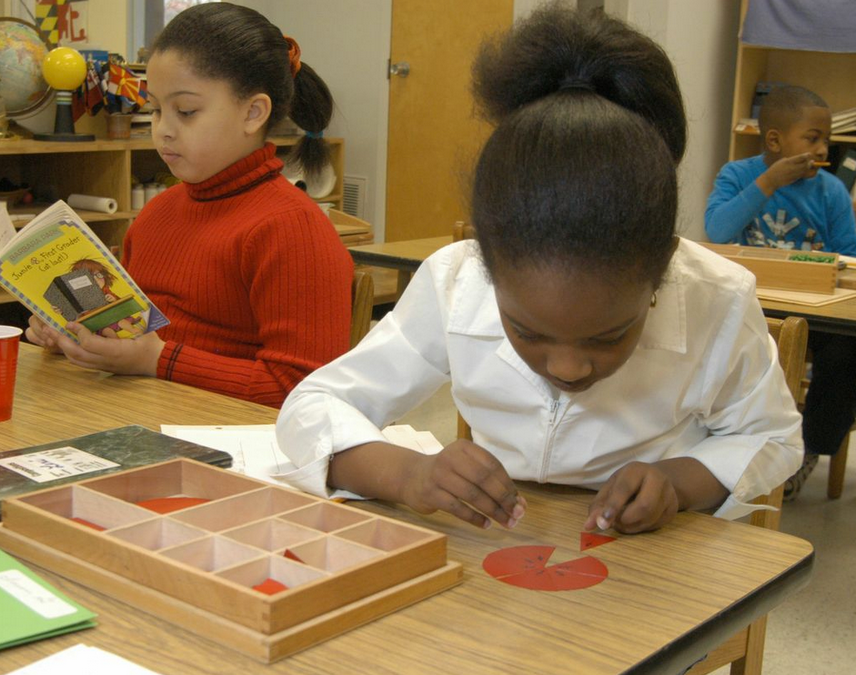 Understand the relationship between numbers and quantities; connect counting to cardinality. (K.CC.B.4)
Understand the relationship between numbers and quantities; connect counting to cardinality. (K.CC.B.4)
There are 25 defined measurable objectives in the Scope & Sequence that align to this standard! These measurable objectives are associated with materials such as the Red and Blue Number Rods, Spindle Box, Cards and Counters, Golden Beads, the Short Bead Stair, the Teen Board, the Tens Board, the Hundred Board and the Hundred Chain. These traditional Montessori Math materials were designed to provide concrete experiences for students to connect counting with actual amounts.
Describe measurable attributes of objects, such as length or weight. Describe several measurable attributes of a single object. (K.MD.A.1).
There are 17 defined measurable objectives in the Scope & Sequence that align with this standard, 11 of which are related to Sensorial materials such as the Pink Tower, the Brown Stairs, Thermic Tablets, Baric Tablets, and more.
The stated goals behind the Common Core’s English Language Arts Standards are also very much in line with the goals of a Montessori classroom.
Here is an excerpt from the Common Core website regarding the English Language Arts Standards:
As a natural outgrowth of meeting the charge to define college and career readiness, the Standards also lay out a vision of what it means to be a literate person in the twenty-first century. Indeed, the skills and understandings students are expected to demonstrate have wide applicability outside the classroom or workplace. Students who meet the Standards readily undertake the close, attentive reading that is at the heart of understanding and enjoying complex works of literature. They habitually perform the critical reading necessary to pick carefully through the staggering amount of information available today in print and digitally. They actively seek the wide, deep, and thoughtful engagement with high-quality literary and informational texts that builds knowledge, enlarges experience, and broadens worldviews. They reflexively demonstrate the cogent reasoning and use of evidence that is essential to both private deliberation and responsible citizenship in a democratic republic. In short, students who meet the Standards develop the skills in reading, writing, speaking, and listening that are the foundation for any creative and purposeful expression in language. http://www.corestandards.org/ELA-Literacy
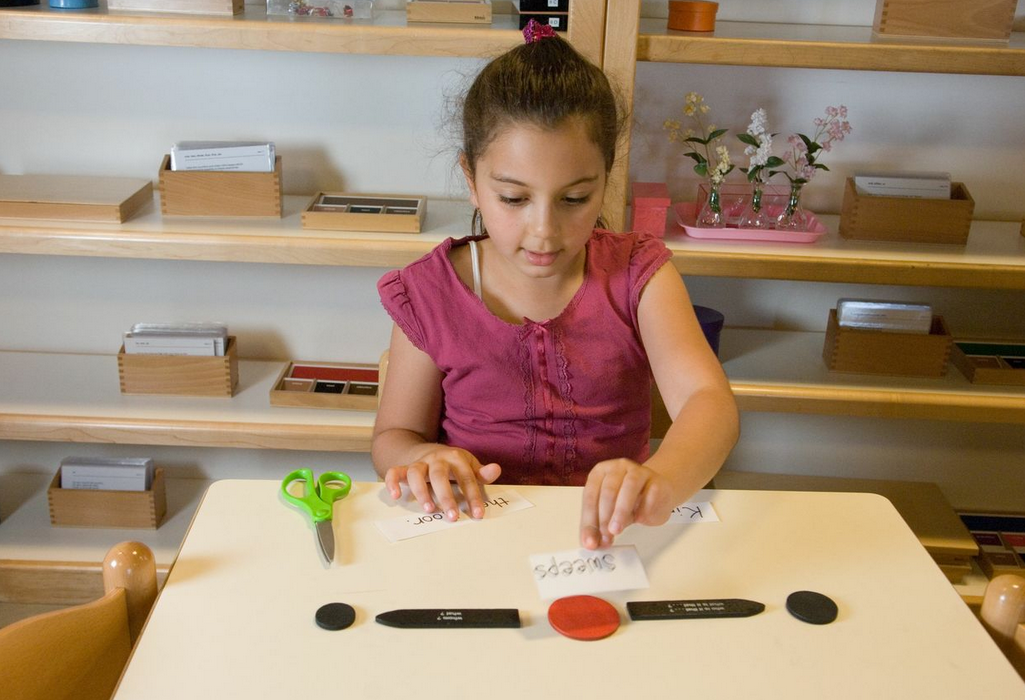 A primary goal of Montessori classrooms is to provide students with a combination of guidance and a prepared environment in which to develop the necessary skills in reading, writing, speaking, and listening that facilitate effective communication and expression. Montessori students have always been encouraged to be independent and critical thinkers; to analyze, question, and contribute their own thoughts on a topic. Montessori students from a very young age are encouraged to “actively seek the wide, deep, and thoughtful engagement with high-quality literary and informational texts that builds knowledge, enlarges experience, and broadens worldviews.”
A primary goal of Montessori classrooms is to provide students with a combination of guidance and a prepared environment in which to develop the necessary skills in reading, writing, speaking, and listening that facilitate effective communication and expression. Montessori students have always been encouraged to be independent and critical thinkers; to analyze, question, and contribute their own thoughts on a topic. Montessori students from a very young age are encouraged to “actively seek the wide, deep, and thoughtful engagement with high-quality literary and informational texts that builds knowledge, enlarges experience, and broadens worldviews.”
The Common Core gets very specific in providing goals for building the necessary skill sets for reading, writing, and speaking effectively from kindergarten through high school. And yet, as with Mathematics, time and time again, the standards are met or exceeded by the Montessori Scope & Sequence.
Here are a few examples:
Follow agreed-upon rules for discussions (e.g., listening to others and taking turns speaking about the topics and texts under discussion). (SL.K.1a)
This standard has eight measurable learning objectives from the Scope & Sequence aligned; four of these learning objectives are from the Practical Life curriculum. Two Grace & Courtesy sub-categories (General Language & Actions and Group Etiquette) address practical life skills related to communicating effectively and politely with others.
Distinguish shades of meaning among verbs describing the same general action (e.g., walk, march, strut, prance) by acting out the meanings. (L.K.5d)
The fact that the link between movement and understanding has always been reflected in the Montessori curriculum is highlighted as this standard has nearly a dozen measurable learning objectives from the Scope & Sequence aligned including Activity Word and Command Card activities.
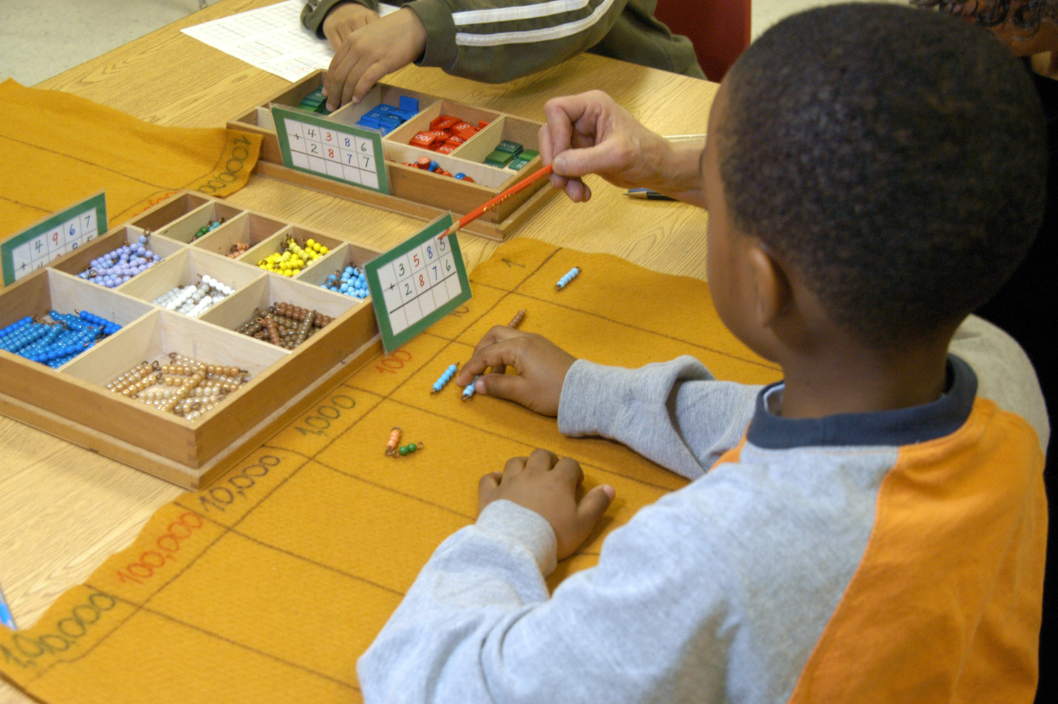 Use verbs to convey a sense of past, present, and future (e.g., Yesterday I walked home; Today I walk home; Tomorrow I will walk home). (L.1.1e)
Use verbs to convey a sense of past, present, and future (e.g., Yesterday I walked home; Today I walk home; Tomorrow I will walk home). (L.1.1e)
This Grade 1 standard has five measurable objectives from the Scope and Sequence aligned including activities such as the “Three Fundamental Tenses” from the History curriculum that is commonly presented at the Primary level.
While the cynicism among Montessorians who have yet to thoroughly research the Common Core is fully understandable, ignoring or fearing this new reality is not going to make it go away. In fact, anything less than a pragmatic and collaborative approach to this issue from the Montessori community, runs the risk of missing out on a very unique, time-sensitive window of opportunity. A comprehensive Montessori Scope & Sequence that includes very specific measurable learning objectives aligned to the Common Core State Standards, can provide the missing piece of the puzzle that education reformers have been desperately seeking. The Common Core, for better or worse, has defined “What” and “When” to teach. The Montessori Method is the answer to the final question of “How” to teach.



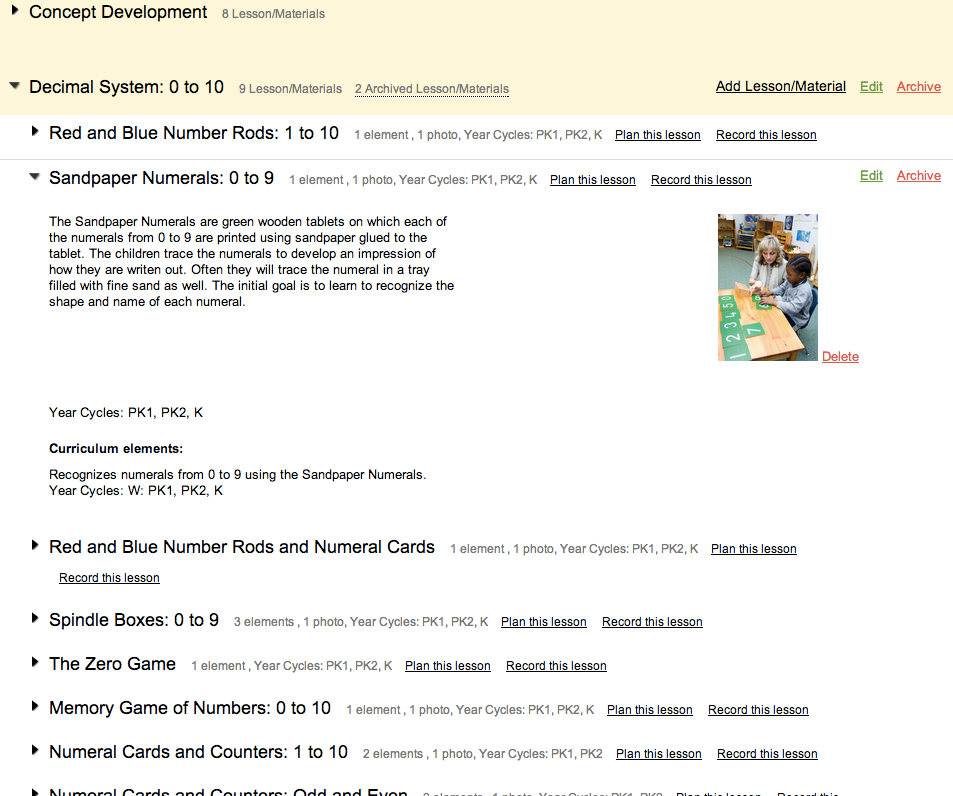 Montessori classrooms can oftentimes function as isolated islands with their own nuances, styles, and, in some cases, curriculum. This can lead to confusion and overall lack of cohesiveness for members of the school staff. It can also be misinterpreted by parents as disorganized and deviating in perceived quality from one classroom to the next. When a school’s team of educators collaborates to define an organized Scope & Sequence, this necessitates agreement upon consistent approaches and yields clarity for all involved. Students in parallel classrooms can receive a comparable experience, regardless of variance in teacher training or professional affiliations. An online record keeping system makes it easy for schools to adhere to a consistent, high-quality Montessori Scope & Sequence for each classroom with an option to align curriculum to national, state, or provincial standards when required. Furthermore, academic portfolios can travel with the child through the cycle years and be easily understood by all of the stakeholders in the educational process – administrators, teachers, and parents.
Montessori classrooms can oftentimes function as isolated islands with their own nuances, styles, and, in some cases, curriculum. This can lead to confusion and overall lack of cohesiveness for members of the school staff. It can also be misinterpreted by parents as disorganized and deviating in perceived quality from one classroom to the next. When a school’s team of educators collaborates to define an organized Scope & Sequence, this necessitates agreement upon consistent approaches and yields clarity for all involved. Students in parallel classrooms can receive a comparable experience, regardless of variance in teacher training or professional affiliations. An online record keeping system makes it easy for schools to adhere to a consistent, high-quality Montessori Scope & Sequence for each classroom with an option to align curriculum to national, state, or provincial standards when required. Furthermore, academic portfolios can travel with the child through the cycle years and be easily understood by all of the stakeholders in the educational process – administrators, teachers, and parents. Charting the individual learning paths for upwards of 20+ students in your classroom is challenging. But doing so in the absence of traditional test-based metrics is exceedingly difficult. Authentic assessments require careful observation coupled with a sophisticated level of organization. Despite one’s best efforts, it is still far too easy to observe a child’s work and think to yourself. . .“Mary is ready for the Teen Board, I will present it tomorrow.”. . .only to have that thought slip your mind the following day. Using an online record keeping system can go a long way towards eliminating this kind of human error by effectively turning your authentic assessments into an actionable task. As you observe a child’s work, plan the next lesson or simply make note of a lesson idea (i.e. works you would like to do with a child when you have the opportunity in the future). Making the shift to charting a digital learning path for each child will do more than just help you remember to present Mary the Teen Board tomorrow. Your classroom will begin to run more smoothly, increasing the velocity in which students progress through the classroom. Over the course of the three-year cycle, the benefits of this more optimized learning environment will compound, yielding tremendous benefits for every child in the classroom.
Charting the individual learning paths for upwards of 20+ students in your classroom is challenging. But doing so in the absence of traditional test-based metrics is exceedingly difficult. Authentic assessments require careful observation coupled with a sophisticated level of organization. Despite one’s best efforts, it is still far too easy to observe a child’s work and think to yourself. . .“Mary is ready for the Teen Board, I will present it tomorrow.”. . .only to have that thought slip your mind the following day. Using an online record keeping system can go a long way towards eliminating this kind of human error by effectively turning your authentic assessments into an actionable task. As you observe a child’s work, plan the next lesson or simply make note of a lesson idea (i.e. works you would like to do with a child when you have the opportunity in the future). Making the shift to charting a digital learning path for each child will do more than just help you remember to present Mary the Teen Board tomorrow. Your classroom will begin to run more smoothly, increasing the velocity in which students progress through the classroom. Over the course of the three-year cycle, the benefits of this more optimized learning environment will compound, yielding tremendous benefits for every child in the classroom.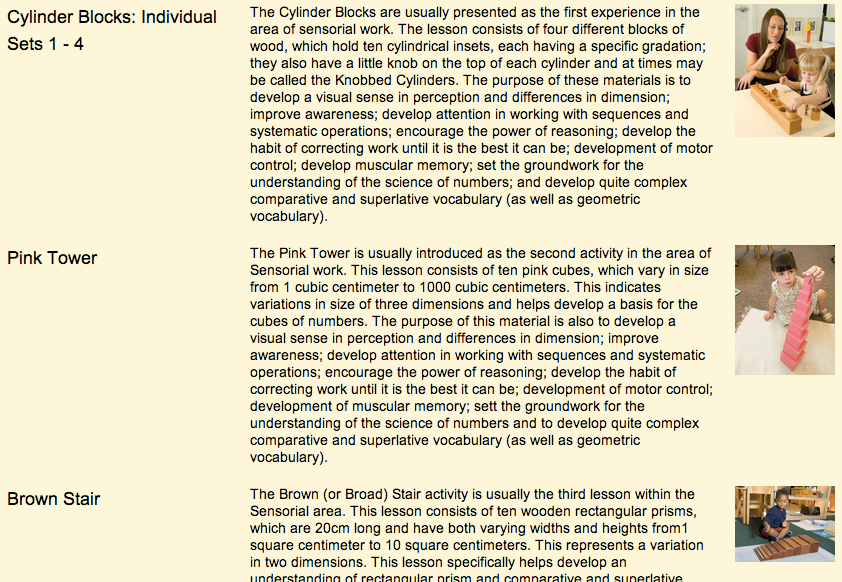 In the absence of tests, grades, homework, etc., progress reports take on a particular importance at Montessori schools. With so many misconceptions about the Method itself, parents may begin to question the decision to continue their child’s Montessori journey. Parents that are inundated with images of their friends “Honor Roll” student on Facebook need to see evidence of a significant return on their investment into a Montessori education. Progress reports represent a remarkable opportunity to not only allay potential doubt in the minds of parents, but to truly astonish them with the beauty, elegance, and efficacy of the Montessori approach. Creating comprehensive and effective progress reports for your classroom no longer has to be the painstaking, papercut-inducing process from yesterday. Online record keeping greatly simplifies this process by compiling all lessons presented to a student over the desired period of time, in seconds flat. Reports can be further customized with personal growth assessments and anecdotal teacher comments. The parent education component of the progress report actually comes as part of the Scope & Sequence. Instead of providing a simple list of lessons/materials with names unfamiliar to most parents (e.g. Red Rods, Metal Insets, Golden Beads, etc.), the Scope & Sequence can contain parent-friendly descriptions and images designed to better convey the direct and indirect aims of each lesson. Instead of taking a crash course in Montessori, this helps parents become more acclimated with the approach by learning alongside the child (i.e. as the child works with the Red Rods, the parent can be educated on the material’s benefits.) By helping parents to gain an increased awareness and appreciation for Montessori, you really have an opportunity to inspire some of these parents to contribute to the Montessori advocacy movement.
In the absence of tests, grades, homework, etc., progress reports take on a particular importance at Montessori schools. With so many misconceptions about the Method itself, parents may begin to question the decision to continue their child’s Montessori journey. Parents that are inundated with images of their friends “Honor Roll” student on Facebook need to see evidence of a significant return on their investment into a Montessori education. Progress reports represent a remarkable opportunity to not only allay potential doubt in the minds of parents, but to truly astonish them with the beauty, elegance, and efficacy of the Montessori approach. Creating comprehensive and effective progress reports for your classroom no longer has to be the painstaking, papercut-inducing process from yesterday. Online record keeping greatly simplifies this process by compiling all lessons presented to a student over the desired period of time, in seconds flat. Reports can be further customized with personal growth assessments and anecdotal teacher comments. The parent education component of the progress report actually comes as part of the Scope & Sequence. Instead of providing a simple list of lessons/materials with names unfamiliar to most parents (e.g. Red Rods, Metal Insets, Golden Beads, etc.), the Scope & Sequence can contain parent-friendly descriptions and images designed to better convey the direct and indirect aims of each lesson. Instead of taking a crash course in Montessori, this helps parents become more acclimated with the approach by learning alongside the child (i.e. as the child works with the Red Rods, the parent can be educated on the material’s benefits.) By helping parents to gain an increased awareness and appreciation for Montessori, you really have an opportunity to inspire some of these parents to contribute to the Montessori advocacy movement.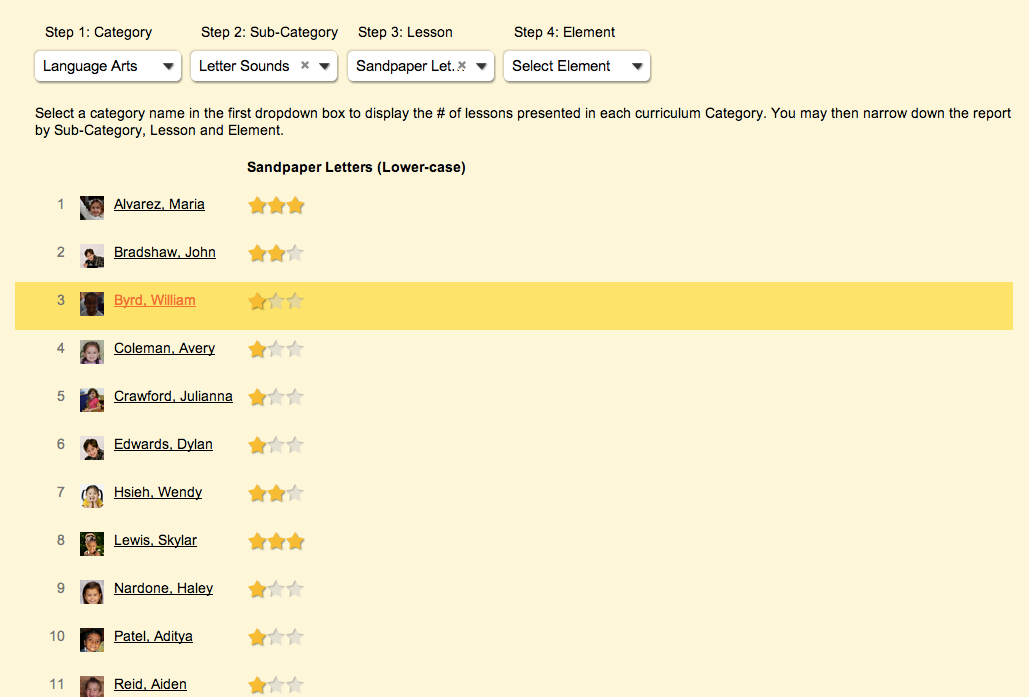 Online record keeping can provide unique opportunities to gain both a macro and micro view of how your students are progressing through the Scope & Sequence. This makes it easier to identify patterns of behavior or trends in your classroom. For example: are the students working with the Farm? If not, perhaps there is something that can be done to make it more appealing. Would placement of the material in the classroom make a difference? Is it too tucked away? Are the students spending time in the Cultural Studies area? If not, what could be altered? Are the works being refreshed too infrequently? Or too frequently? What about the balance between the time being spent by students in the Language and Mathematics areas? What is working? What could be improved?
Online record keeping can provide unique opportunities to gain both a macro and micro view of how your students are progressing through the Scope & Sequence. This makes it easier to identify patterns of behavior or trends in your classroom. For example: are the students working with the Farm? If not, perhaps there is something that can be done to make it more appealing. Would placement of the material in the classroom make a difference? Is it too tucked away? Are the students spending time in the Cultural Studies area? If not, what could be altered? Are the works being refreshed too infrequently? Or too frequently? What about the balance between the time being spent by students in the Language and Mathematics areas? What is working? What could be improved? Documenting daily classroom observations is a vital component in charting individual learning paths. However, maintaining well-organized observations in an effort to facilitate effective lesson planning can be a real challenge. Online record keeping provides an opportunity to utilize a virtual “fresh sheet of paper” for each student every day of the week, all in the same convenient location. Whether it’s a one-liner or multiple paragraphs, observations are instantly saved to individual student profiles and easily accessible. For quick, hands-free documentation in the classroom, you can even use speech-to-text on your smartphone! Having all of your virtual student notebooks visible at a glance enables you to know exactly which students have been observed and which have not. It also makes it easy to see which students have been busy and which may require additional encouragement. Finally, having all of your record keeping and observations in the same centralized location provides the ultimate in flexibility as you can access anytime, anywhere from any Web-enabled device.
Documenting daily classroom observations is a vital component in charting individual learning paths. However, maintaining well-organized observations in an effort to facilitate effective lesson planning can be a real challenge. Online record keeping provides an opportunity to utilize a virtual “fresh sheet of paper” for each student every day of the week, all in the same convenient location. Whether it’s a one-liner or multiple paragraphs, observations are instantly saved to individual student profiles and easily accessible. For quick, hands-free documentation in the classroom, you can even use speech-to-text on your smartphone! Having all of your virtual student notebooks visible at a glance enables you to know exactly which students have been observed and which have not. It also makes it easy to see which students have been busy and which may require additional encouragement. Finally, having all of your record keeping and observations in the same centralized location provides the ultimate in flexibility as you can access anytime, anywhere from any Web-enabled device. The Montessori Compass team is very excited to exhibit at the
The Montessori Compass team is very excited to exhibit at the  The
The  Now that we have established in a very broad sense what CCSS “is” and who it presently “affects”, we can begin a meaningful analysis.
Now that we have established in a very broad sense what CCSS “is” and who it presently “affects”, we can begin a meaningful analysis. In addition, the “sequence of topics and performances” that is outlined in a body of mathematics standards must also respect what is known about how students learn. As Confrey (2007) points out, developing “sequenced obstacles and challenges for students…absent the insights about meaning that derive from careful study of learning, would be unfortunate and unwise.” In recognition of this, the development of these Standards began with research-based learning progressions detailing what is known today about how students’ mathematical knowledge, skill, and understanding develop over time.
In addition, the “sequence of topics and performances” that is outlined in a body of mathematics standards must also respect what is known about how students learn. As Confrey (2007) points out, developing “sequenced obstacles and challenges for students…absent the insights about meaning that derive from careful study of learning, would be unfortunate and unwise.” In recognition of this, the development of these Standards began with research-based learning progressions detailing what is known today about how students’ mathematical knowledge, skill, and understanding develop over time.  Understand the relationship between numbers and quantities; connect counting to cardinality. (K.CC.B.4)
Understand the relationship between numbers and quantities; connect counting to cardinality. (K.CC.B.4) A primary goal of Montessori classrooms is to provide students with a combination of guidance and a prepared environment in which to develop the necessary skills in reading, writing, speaking, and listening that facilitate effective communication and expression. Montessori students have always been encouraged to be independent and critical thinkers; to analyze, question, and contribute their own thoughts on a topic. Montessori students from a very young age are encouraged to “actively seek the wide, deep, and thoughtful engagement with high-quality literary and informational texts that builds knowledge, enlarges experience, and broadens worldviews.”
A primary goal of Montessori classrooms is to provide students with a combination of guidance and a prepared environment in which to develop the necessary skills in reading, writing, speaking, and listening that facilitate effective communication and expression. Montessori students have always been encouraged to be independent and critical thinkers; to analyze, question, and contribute their own thoughts on a topic. Montessori students from a very young age are encouraged to “actively seek the wide, deep, and thoughtful engagement with high-quality literary and informational texts that builds knowledge, enlarges experience, and broadens worldviews.” Use verbs to convey a sense of past, present, and future (e.g., Yesterday I walked home; Today I walk home; Tomorrow I will walk home). (L.1.1e)
Use verbs to convey a sense of past, present, and future (e.g., Yesterday I walked home; Today I walk home; Tomorrow I will walk home). (L.1.1e)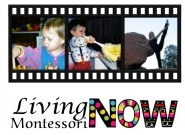 Deb Chitwood from
Deb Chitwood from  The Montessori Compass team is very happy to provide free access to a sophisticated and comprehensive
The Montessori Compass team is very happy to provide free access to a sophisticated and comprehensive  The Montessori Compass team is pleased to provide a sophisticated and comprehensive mapping to the
The Montessori Compass team is pleased to provide a sophisticated and comprehensive mapping to the 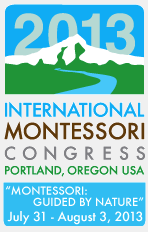 The Montessori Compass team is very excited to join thousands of passionate Montessorians from around the world at the
The Montessori Compass team is very excited to join thousands of passionate Montessorians from around the world at the